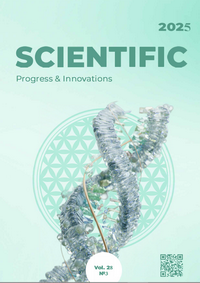Comparative effectiveness of treatment methods for dogs suffering from pyoderma
DOI:
https://doi.org/10.31210/spi2025.28.03.33Keywords:
dogs, skin diseases, pyoderma, treatment, sanoderm, chlorhexidineAbstract
The aim of this study was to evaluate and compare the clinical efficacy of different treatment regimens for pyoderma in dogs, namely, to analyze mono- and combined therapy. The study involved 36 dogs of various breeds, aged from one to ten years, with the confirmed diagnosis of pyoderma. During the experiment, the animals were divided into three groups: the first group received local treatment with “Sanoderm” preparation, the second group received local therapy with 4 % chlorhexidine shampoo, and the third group received combined treatment, which combined “Sanoderm” preparation and 4 % chlorhexidine shampoo. The clinical monitoring included the analysis of visible pathological changes on the skin, the assessment of itching intensity using the visual analogue scale (VAS), tracking of healing time and recurrence rates for 60 days after completion of therapy. It was found that the most effective therapy in terms of clinical recovery (91.7 %), treatment duration (16.8±1.7 days), and recurrence rate (8.3 %) was observed in the group that received combined therapy. The combined therapy significantly exceeded the results of monotherapy. In the group where “Sanoderm” preparation was used, the clinical recovery level made 69.2 %, the average treatment duration was 22.6±1.8 days, and the recurrence rate was 30.8%. In the group of animals treated locally with 4 % chlorhexidine shampoo, the clinical recovery rate made 54.5 %, the average treatment duration was 25.1±2.2 days, and the recurrence rate was 27.3 %. We assessed the itching of animals on the first day of treatment: the results of the first group of animals (VAS<8.6), the second group (VAS<8), and the third group (VAS<8.3) indicate the presence of itching and discomfort in animals. On the fourteenth day of treatment, the assessment of the first group (VAS<2.9), the second (VAS<4.2), and the third (VAS<1.6) showed that positive dynamics was observed in the group of animals using the combined treatment. For a more comprehensive assessment of the results, we used the following evaluation criteria: quantitative assessment of skin lesions, determining the clinical healing duration, and recording the frequency of relapses, which allowed us to increase the reliability of the therapeutic dynamics assessment. The best treatment results were in the third group, i.e.,after the use of complex therapy. The results of the study can be used in clinical practice to improve treatment protocols and can be used for a more optimal selection of therapy for this pathology.
Downloads
Published
How to Cite
Issue
Section
License
Copyright (c) 2025 Scientific Progress & Innovations

This work is licensed under a Creative Commons Attribution 4.0 International License.

 Creative Commons Attribution 4.0 International Licens
Creative Commons Attribution 4.0 International Licens